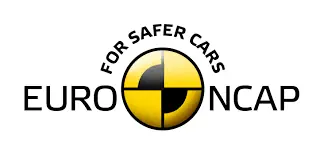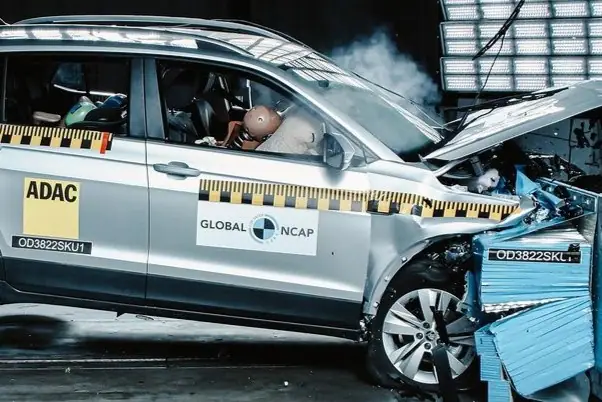What is NCAP Rating
NCAP stands for “New Car Assessment Program” and it is a program that tests and rates the safety of new cars. The most well-known NCAP program is the Euro NCAP (European New Car Assessment Program), which was founded in 1997 and focuses on testing the safety of new cars sold in the European Union. However, there are also other NCAP programs around the world, such as the Australasian NCAP, the Latin NCAP, and the Global NCAP.
NCAP tests evaluate the safety of cars in various types of crashes, including front, side, and rear impacts, as well as rollovers. Cars are also evaluated for their ability to protect occupants in a crash, including adult and child occupants, as well as pedestrians.

The NCAP rating system uses a star rating system, with a maximum of five stars. The higher the number of stars, the better the vehicle performed in the tests, meaning it is considered safer. The NCAP rating also include an overall score, which is based on a set of criteria, including adult and child occupant protection, pedestrian protection, and safety assist technologies.
NCAP ratings are important for consumers because they provide an independent and reliable assessment of a vehicle’s safety performance. It also helps consumers to compare the safety of different vehicles, which can aid in their decision-making process when purchasing a new car.
How is NCAP Ratings Calculated?
NCAP ratings are calculated based on the results of a series of crash tests and safety assessments conducted by the organization. The tests are designed to simulate real-world crash scenarios and evaluate how well a vehicle protects its occupants in a crash.
The tests are conducted in accordance with strict protocols and guidelines set by the organization. The cars are crashed at a specified speed and angle, and sensors are used to measure the forces on the vehicle’s structure and on the dummy occupants inside the car.
The results of the crash tests are used to calculate an overall score for the vehicle, which is based on a set of criteria established by the NCAP organization. These criteria typically include adult and child occupant protection, pedestrian protection, and safety assist technologies such as electronic stability control, lane departure warning, and automatic emergency braking.
The overall score is then used to determine the vehicle’s star rating. For example, a score of 80-89 would result in a four-star rating, and a score of 90 or higher would result in a five-star rating. The higher the score, the better the vehicle performed in the tests, and the safer it is considered to be.
It’s worth noting that different testing agencies may have different testing protocols, which may affect the calculation of the safety ratings, but the overall rating process is similar.
Is NCAP Test Mandatory?
The NCAP tests are not mandatory for car manufacturers to conduct. However, many car manufacturers voluntarily participate in NCAP testing as a way to demonstrate the safety of their vehicles and to help consumers make informed decisions when purchasing a new car.
In some countries, it is mandatory for car manufacturers to conduct NCAP tests to sell their cars, either by government regulations or by consumer pressure. For example, in the European Union, it is mandatory for car manufacturers to conduct Euro NCAP tests and to display the results on their vehicles in showrooms and in advertising. In India, it is not mandatory for car manufacturers to conduct NCAP tests, but it is encouraged by the government and is becoming a norm in the industry.
Overall, NCAP ratings can be helpful for consumers in evaluating the safety of different vehicles, but it’s also important to keep in mind that the NCAP test only looks at a small number of scenarios, and a good rating does not guarantee safety in all possible crash situations. It is also important to consider other factors such as vehicle size, weight, and design when evaluating the overall safety of a vehicle.
Why Are Some Cars Not Crash-Tested?
There are a few reasons why some cars are not crash-tested:
- Cost: Crash-testing is a costly and time-consuming process, and some manufacturers may choose not to invest the resources into testing their vehicles.
- Limited market appeal: Some cars may only be sold in small numbers, and manufacturers may not see a significant benefit in investing the money to test them.
- Lack of consumer demand: If consumers are not demanding crash-test ratings for a particular model, manufacturers may not see a benefit in providing them.
- Not all cars are available in the market, or some are in the development stage and have not been launched yet.
- Some manufacturers may believe that their cars have already passed similar tests, so they do not see the need to conduct the test again.
It’s worth noting that, as the technology and safety standards are advancing, the testing agencies are also updating their testing protocols, which may affect the decision of manufacturers to conduct the test.
It’s important to keep in mind that a lack of crash-test data does not necessarily mean that a car is unsafe. However, it does make it more difficult for consumers to evaluate the vehicle’s safety and make Appropriate decisions. Therefore, it’s essential to consider other factors such as vehicle size, weight, and design when evaluating the overall safety of a vehicle.
What Does 5 Star NCAP Rating Mean?
A 5-star rating from the New Car Assessment Program (NCAP) is the highest rating a vehicle can receive, indicating that it performed well in a series of safety tests designed to assess the vehicle’s ability to protect occupants in the event of a crash. The NCAP rating system is used by many organizations worldwide, including Euro NCAP, ANCAP and Global NCAP, each organization may have slightly different protocols and standards to conduct their crash test, but the overall rating system is similar.
The rating is based on a series of tests that assess the vehicle’s performance in several areas, including:
- Adult Occupant Protection: How well the vehicle protects adult occupants in a crash.
- Child Occupant Protection: How well the vehicle protects child occupants in a crash.
- Pedestrian Protection: How well the vehicle protects pedestrians in the event of a crash.
- Safety Assist Technologies: How well the vehicle’s advanced safety technologies, such as electronic stability control, lane departure warning, and automatic emergency braking, work to prevent crashes.
The overall rating is a combination of the scores from each of these tests, with a higher overall score resulting in a higher rating. A 5-star rating indicates that the vehicle performed extremely well in all tests and offers a high level of protection to occupants and pedestrians in the event of a crash.
